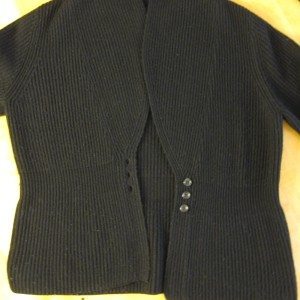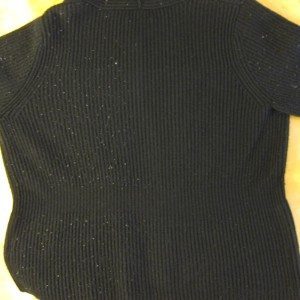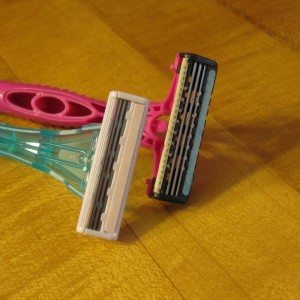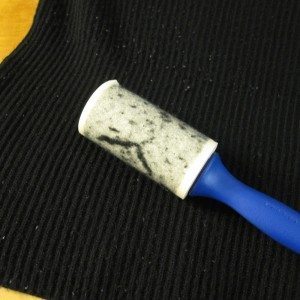A black sweater hung abandoned in my closet for a long, long time (two years? more?) because it was covered in white or off-white pills. It was such a mess that I didn’t want to look at it, much less be seen in public in it. During my wardrobe reset over the holidays I decided to finally fix it.
My first try was a safety razor, having repeatedly seen the “life hack” of using one to remove pills. It didn’t work at all. I then turned to my battery-operated sweater shaver, which works much better, but was going to take probably 8 AA batteries to finish the whole thing. After that realization I thought I’d better give the safety razor another try, and grabbed a different brand. That one worked like a charm!
I didn’t take a full “before” picture, but here’s the front cleared by battery and back half hand-shaved.


Some consideration and the testing of yet a third brand of disposable razor has led me to conclude the key is widely-spaced blades. The original razor’s blades were very close together, which for hair is fine, but for large lint balls is not. Now, I did go through a couple of razors as well (my sweater is acrylic; as with all synthetics that probably contributed to speedier dulling of blades than a natural fiber would have), and a bunch of lint roller sheets, but it still seems more environmental than a bunch of batteries, and certainly was more economical.
Here’s a picture comparing the razor that did work to the razor that didn’t. You can hopefully see the difference in blade spacing.


Some tips:
It doesn’t have to be expensive to have widely set blades. I started with some wide, three-bladed Schick product that probably was at the upper end of disposables, but ended with the narrower, two-bladed, and almost certainly much cheaper Bic Silky Touch. It worked just as well (given the limitations of size and number of blades).
You can reduce the quantity of lint roller sheets or lengths of masking tape you use by picking the large tumbleweeds of fluff off by hand. My picture above was before I thought of that.
Shave with the grain. That is, if your sweater has ridges, ribbing, or cables, shave along them rather than across them. You want the blades as smooth against the fabric as possible to avoid gouging the yarn and creating weak spots that could turn into holes. I made an exception to this for the fuzziest part of the sweater, the bottom of the inside back, where shaving with the ridges didn’t seem to accomplish anything.
Be patient, take breaks, and clean the fluff out of your razor regularly. If the razor just stops working even after cleaning, swap it out. It’s less waste than a sweater!